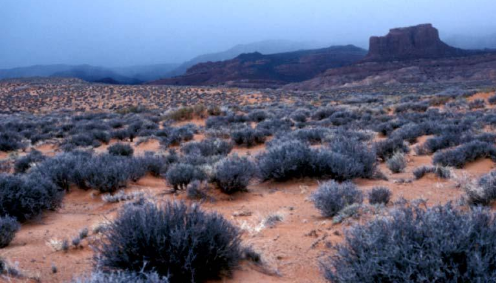From the Rocky Mountain Research Station:
Blackbrush (Colegyne ramosissima) is a desert shrubland species that is currently dominant on over three million acres of the transition zone between the cold desert of the Great Basin and the warm desert of the southwestern United States. Western landscapes are projected to experience unprecedented changes as the climate warms, and researchers at the Rocky Mountain Research Station have been studying the response of this species to assess whether it can move upward in elevation and latitude.
Further reading:
Finch, Deborah M., ed. 2012. Climate change in grasslands, shrublands, and deserts of the interior American West: a review and needs assessment. Gen. Tech. Rep. RMRS-GTR-285. Fort Collins, CO: U.S. Department of Agriculture, Forest Service, Rocky Mountain Research Station. 139 p.
Meyer, S.E.; Pendleton, B.K. 2005. Factors affecting seed germination and seedling establishment of a long-lived desert shrub (Colegyne ramosissima: Rosaceae). Plant Ecology. 178: 171-187.
Pendleton, R.L.; Pendleton, B.K.; Meyer, S.E.; Carlson, S.C.; Morrison, E.M. 2012. Blackbrush seed (Colegyne ramosissima Torr. [Rosaceae]) following long-term storage. Native Plants. 13(1): 5-13.
Pendleton, B.K.; Meyer, S.E. 2004. Habitat correlated variation in blackbrush (Colegyne ramosissima: Rosaceae) seed germination response. Journal of Arid Environments. 59: 229-243.
Richardson, B.A; Meyer, S.E. 2012. Paleoclimate effects and geographical barriers shape regional population genetic structure of blackbrush (Colegyne ramosissima: Rosaceae). Botany. 90: 293-299.

